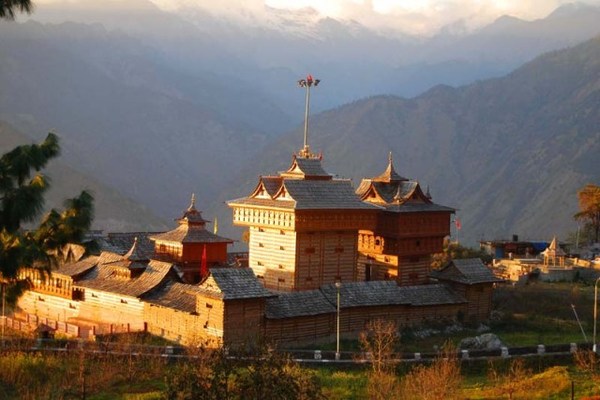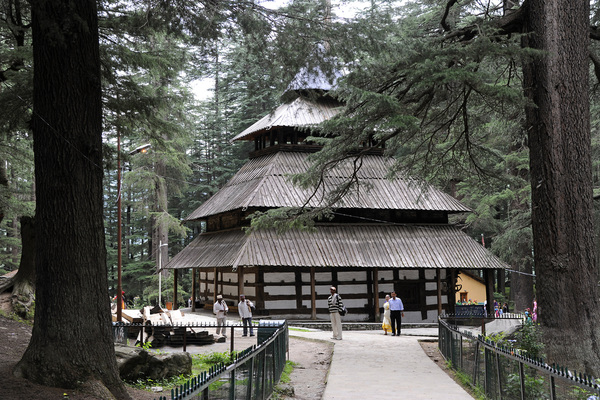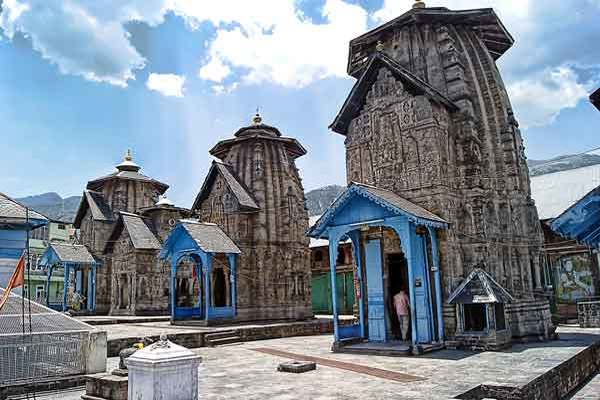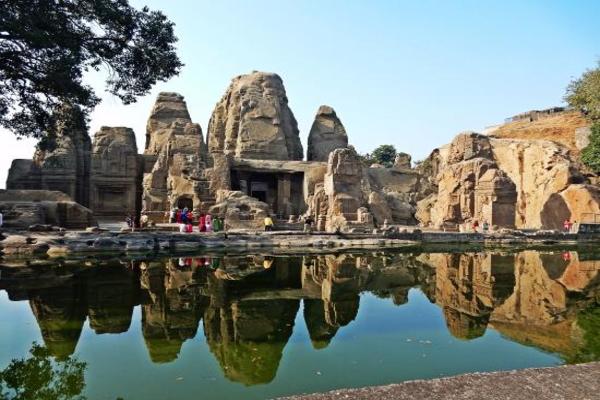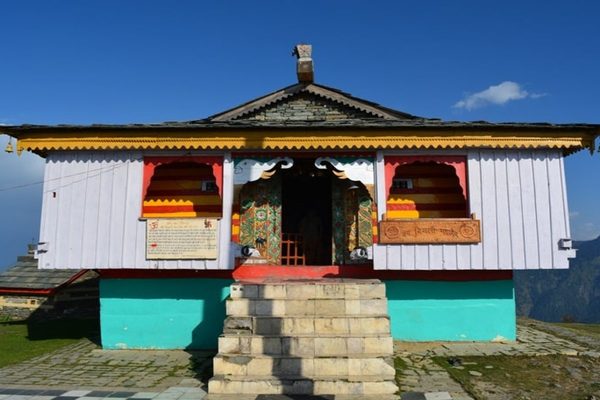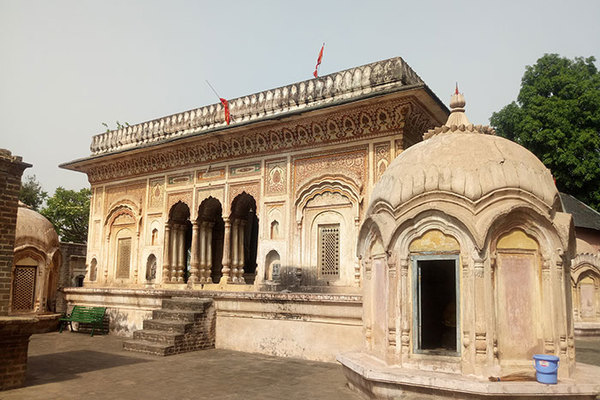The temples in Himachal Pradesh have special architectural forms that are synchronous to the character of the hills where these are built. A Director-General of Indian Council of Cultural Relations had once remarked that a visitor to India would go to the South to see the architectural marvels of the temples there not knowing how much had he missed by not coming to Himachal Pradesh. The architecture of the temples here has a language rather dialect which goes with the surroundings, so it is excellent communication between the building and the visitor. The temple architecture of Himachal Pradesh patterns have a different style, namely:
Sutlej Valley Style:
It is a style of mandap (porch) with one or more pagoda
roofs above the garbha griha (sanctum sanctorum) that correspond to Shikhar (tower) of a
classical temple, usually at one end of the building but sometimes in the
centre. Bhimakali temple at Sarahan (Shimla) is one such. Dr. A.M. Frencke
found it, “one of the finest specimens of hill architecture the roofs are
slanting and slightly concave like those of Chinese.”
Pagoda Style:
Freestanding pagoda having superimposed roofs directly
over the garbh griha. The temples with pyramidal tiered roofs shape up the
pagoda look. The diminishing roofs rise above the other and the top one, unlike
the squarish others is round- funnel-like. Hadimba Temple (Manali), Tripurasundari
temple, and Adi Brahma in Kullu are a few to be named.
Shikhar Style:
A tower-like conical formation built of stone and
decorated with carvings is shikhar style of architecture. The top of the
shikhar has amalaka, the circular sun-disc. All the essential elements of a
Hindu temple, Mandap (porch), garbh griha (sanctum sanctorum) and Shikhar
(tower); are there in such constructions. Less significant temples in Himachal
Pradesh has done away with wonders. Lord Vaidyanath’s temple at Baijnath
(Kangra) and The Luxmi Narayan Group of temples at Chamba are fine examples of
this type. J.P. Vogel and others have delved deep into “the most famous stone
temple at Bajaura as an exquisite specimen of Shikhar Style.
The solitary instance of rock-cut temple architecture reminding
one of the thought-provoking remnants of Gupta-influenced ‘classical’ art that
thrived in the hills is the Thakurwada at Masrur (Kangra). It has been called
the earliest specimen of Shikhar design in the Himalayas.
Timber-bonded style:
Timber-bonded style with pent roof and optional verandah
are some temple architecture of Himachal Pradesh. Bijli Mahadev (Kullu);
Lakshana Devi at Bharmour (Chamba); Shakti Devi at Chatrari (Chamba) and
Hatkoti (Shimla) are a few examples of this type of architecture. It is the most
common form in the hills.
Dome style:
These are new additions to the old architecture of temples in the hills. The temples with domes-round or elongated or flat- are those of Jwalamukhi (Kangra); Bajreshwari (Kangra); Chintpurni (Una), Naina Devi (Bilaspur).
Flat roofed style:
A few examples of flat-roofed temples are Narbadeshwar at
Sujanpur Tira (Hamirpur) and Ramgopal temple at Damtal (Kangra). Most of the
Buddhist monasteries are also flat-roofed here.
These type of temple architecture is not found in Himachal only but in other parts of North India also. Each village in Himachal Pradesh has a deity and temple. These deities are worshipped in their idol and approached thought the pujari (priest). When invoked the deity through the pujari directs the people to perform certain acts or puja and get rid of the problems. There are lots of pilgrimage tours organized by government and travel agencies by which you can explore the beauty of hill and the temple architecture of Himachal Pradesh.

